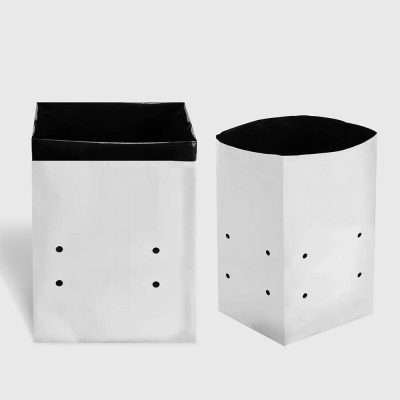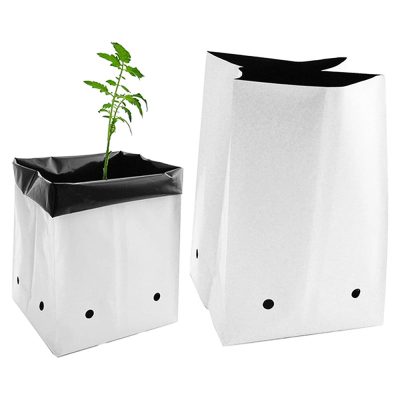When exploring different sizes and thicknesses of plastic grow bags, consider the following factors to help you determine which ones to choose:
- Plant Size and Growth: Select grow bags that provide enough space for the specific plant’s root system. Consider the mature size of the plant and its growth habits. Smaller plants may thrive in smaller grow bags, while larger plants may require larger bags to accommodate their root spread.
- Space Availability: Assess the available space in your garden or growing area. If you have limited space, choose grow bags that fit well within the available area and allow for adequate plant spacing.
- Portability: If you plan to move your plants frequently or if you have limited space, consider the portability of the grow bags. Smaller bags are generally lighter and easier to move, while larger bags may be more challenging to transport when filled with soil and plants.
- Thickness and Durability: Thicker plastic grow bags are generally more durable and can withstand wear and tear caused by weather elements, frequent moving, or root growth. Consider the expected lifespan of your plants and choose grow bags that can sustain them for the duration of their growth cycle.
- Planting Medium: The type of planting medium or potting mix you intend to use may influence the size and thickness of the grow bags. Some potting mixes are denser and heavier, requiring more substantial bags to support the weight and prevent tearing.
- Watering Frequency: Larger grow bags retain moisture for a more extended period compared to smaller bags. Consider the watering needs of your plants and choose grow bags that align with those requirements. Smaller bags may require more frequent watering, while larger bags may allow for longer intervals between watering.
- Environmental Considerations: Assess your local climate and environmental conditions. Thicker grow bags can provide better insulation and protection against temperature fluctuations, which can be beneficial in extreme climates. If you live in a hot region, thicker bags may help reduce the risk of overheating and root damage.
- Budget: Consider your budget when selecting grow bags. Larger or thicker bags may be more expensive than smaller or thinner options. Determine the trade-off between cost and the specific requirements of your plants.
It’s also worth noting that plastic grow bags are available in various shapes, such as round, square, or rectangular. The choice of shape depends on personal preference, space availability, and the plant’s growth habit.
In summary, choose plastic grow bags that accommodate the size of your plants, align with your available space, and provide the desired durability and portability. Consider the thickness based on climate and environmental conditions, as well as the watering frequency and budget. By considering these factors, you can select the appropriate size and thickness of plastic grow bags for your gardening needs.








